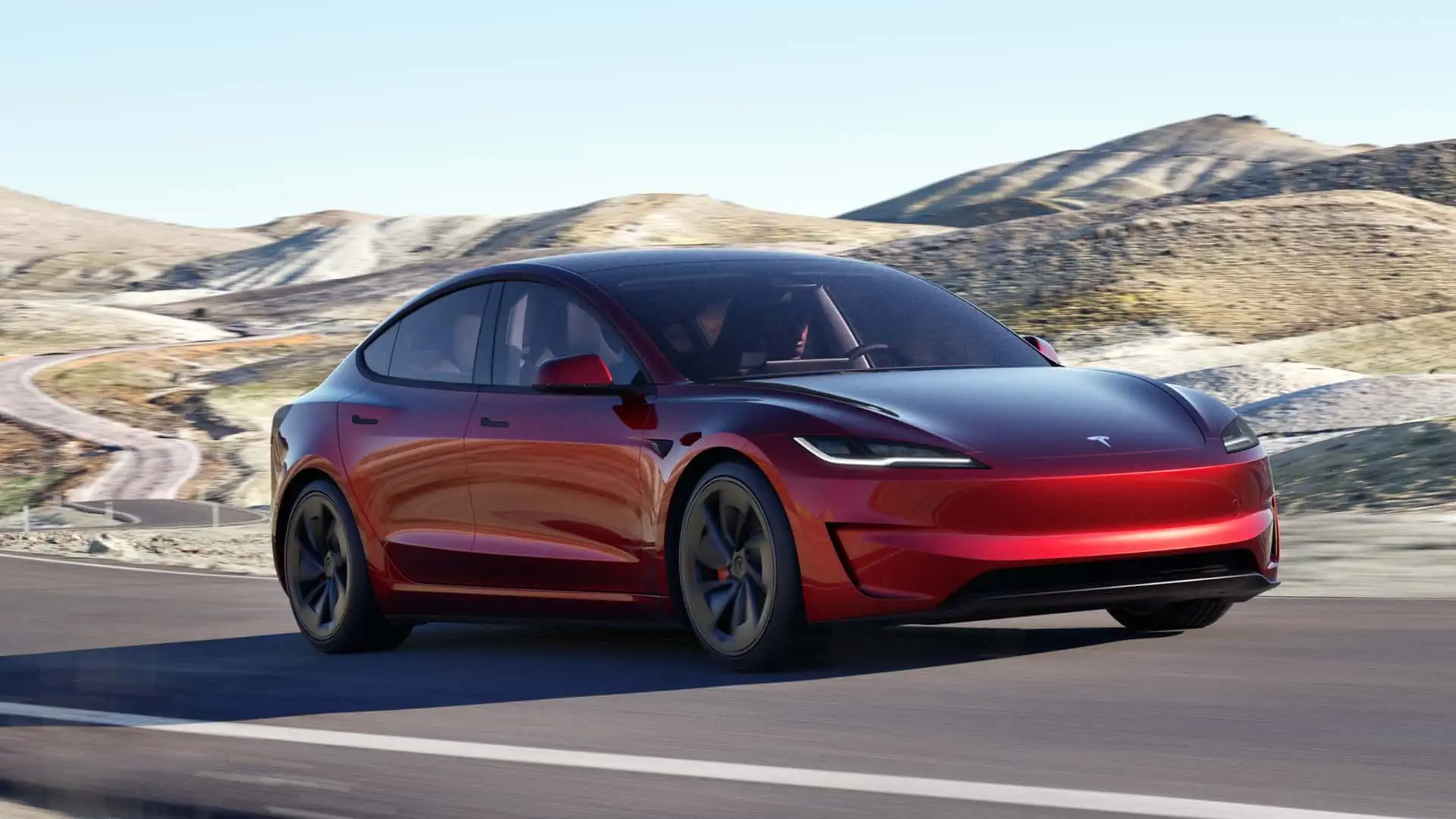Tesla recently shared a chart presenting the average battery capacity retention per distance traveled of the Model 3 and Model Y cars with Long Range battery packs.
According to Tesla’s 2023 Impact Report, the average battery capacity loss of the Model 3/Model Y Long Range versions after 200,000 miles is 15%. This also means the average capacity retention after the distance is 85%.
The Tesla Model 3/Model Y Long Range’s battery degradation results are quite impressive, although not as high as the Model S/Model X cars, which averaged 12% capacity loss after 200,000 miles or 88% capacity retention.
Tesla wrote that its batteries are designed for over 200,000 miles of driving: “Even after 200,000 miles of usage, our batteries in Model 3 and Model Y lose just 15% of their capacity on average, while batteries in Model S and Model X lose just 12% of their capacity on average.”
The company also noted that, according to its estimate, a vehicle gets scrapped after approximately 200,000 miles of usage in the U.S. and roughly 150,000 miles in Europe. This means that the batteries should last long enough not to need replacing: “…we often get asked: Will I need to replace my battery at some point in the future? The answer is no. Since we’ve been selling EVs for over a decade, we have a reliable data set that shows us battery degradation over time.”
Importantly, the chart below concerns only the Tesla Model 3/Model Y with Long-Range batteries. These versions usually consist of 2170-type cylindrical battery cells (NCA or NCM chemistries) from various suppliers.
We believe the data does not include the Standard Range batteries, the LFP type or Tesla’s in-house developed and produced 4680-type cylindrical battery cells. The only Model Y equipped with these cells wasn’t marketed as “Long Range,” but simply AWD.
Tesla Model 3/Model Y Long Range versions:
- mileage: 200,000 miles (322,000 km)
- capacity retention: 85%
- capacity loss: 15%
1% per 13,333 miles (21,453 km)
1% per 53 theoretical full charging cycles (assuming 250 miles per charging)
Tesla Model 3/Model Y Long Range Battery Capacity Degradation

The average is just one measure. Tesla’s chart also shows us other things. The capacity fade has the highest rate initially, but then it slows down and remains quite linear. It seems that the first 10% might be lost somewhere between 60,000 and 80,000 miles.
Another thing is the standard deviation shown on the chart above. It’s pretty close to the average. Assuming normal distribution (we don’t know the distribution curve), some 68% of the vehicle fleet or more than two-thirds should be within the green area—battery capacity of more than 80%. Some are even close to 90%). However, it also means that the remaining third (32%) might be outside, most likely under 80%.
In other words, the 85% average does not mean your vehicle will get such a result. There might be a high number of vehicles under 80% capacity.
Now, let’s remember the previously described Model S/Model X’s battery capacity degradation, which was shown in the 2022 Tesla Impact Report.
The Model S/Model X duo is equipped with 1865-type cylindrical battery cells (NCA chemistry) supplied by Panasonic (probably the sole supplier).
Tesla Model S/Model X versions:
- mileage: 200,000 miles (322,000 km)
- capacity retention: 88%
- capacity loss: 12%
1% per 16,667 miles (26,817 km)
1% per 67 theoretical full charging cycles (assuming 250 miles per charging)
Tesla Model S/Model X Battery Capacity Degradation

The difference between the two model families (15% and 12% capacity fade) is difficult to explain. The cars are different, their use cases might be different, their battery cells are different, their battery pack design (including thermal management system) is different, and the battery pack capacity is substantially different. The design and capacity have also changed over the years.
At least theoretically, the smaller the battery pack capacity, the higher the load on the battery to cover the same distance. In most cases, the Model S/Model X duo has a battery capacity of about 100 kilowatt-hours. The Model 3/Model Y Long Range has a substantially lower value—80 kWh. This difference might be partially offset by having a smaller, lighter, and more efficient car.
Here is a direct comparison between the two Tesla’s charts. We briefly placed one on top of the other (Model 3/Y’s chart was re-sized to fit the Model S/X scale):
Tesla Model 3/Y Vs. Model S/X Battery Capacity Degradation


